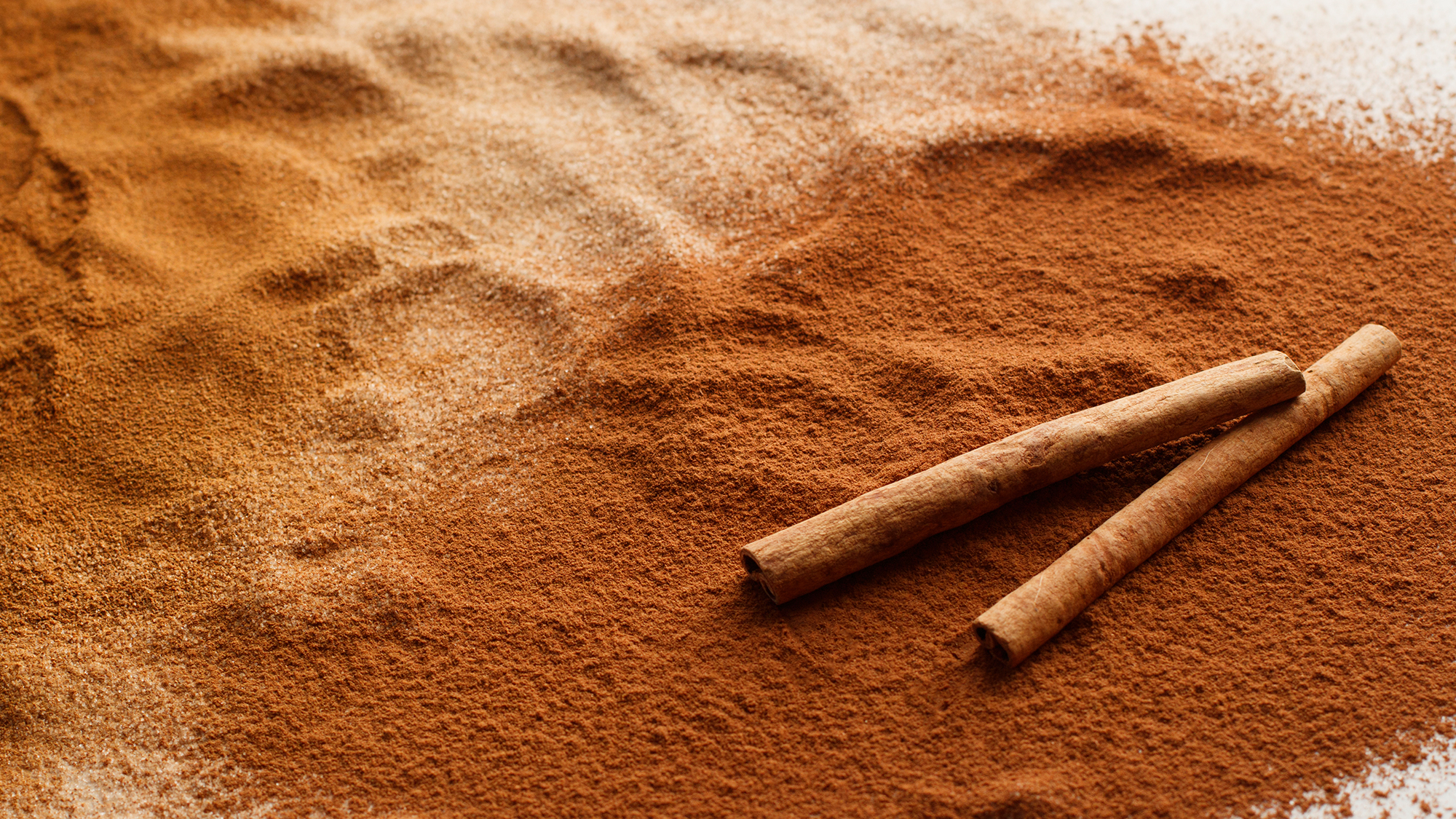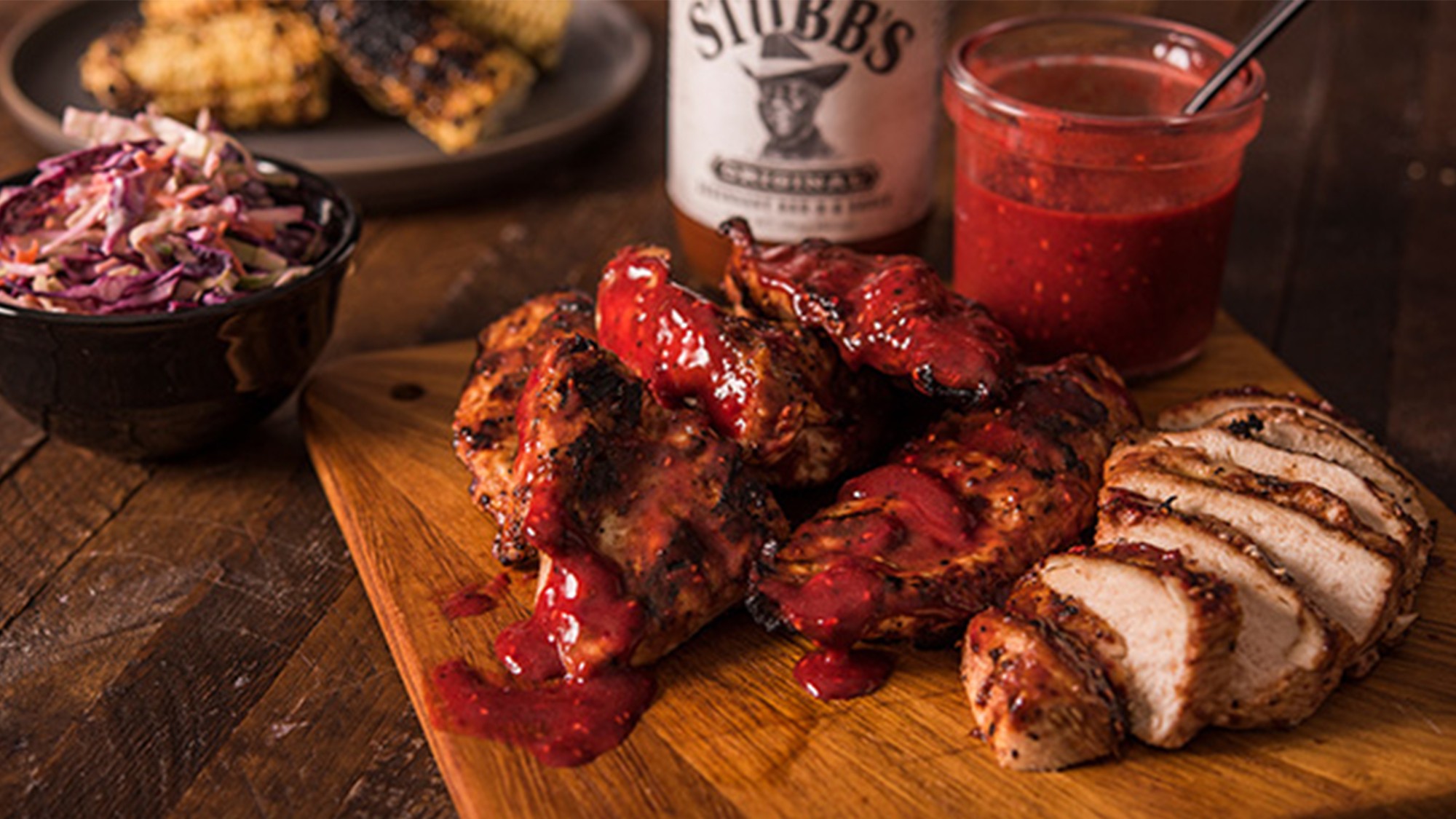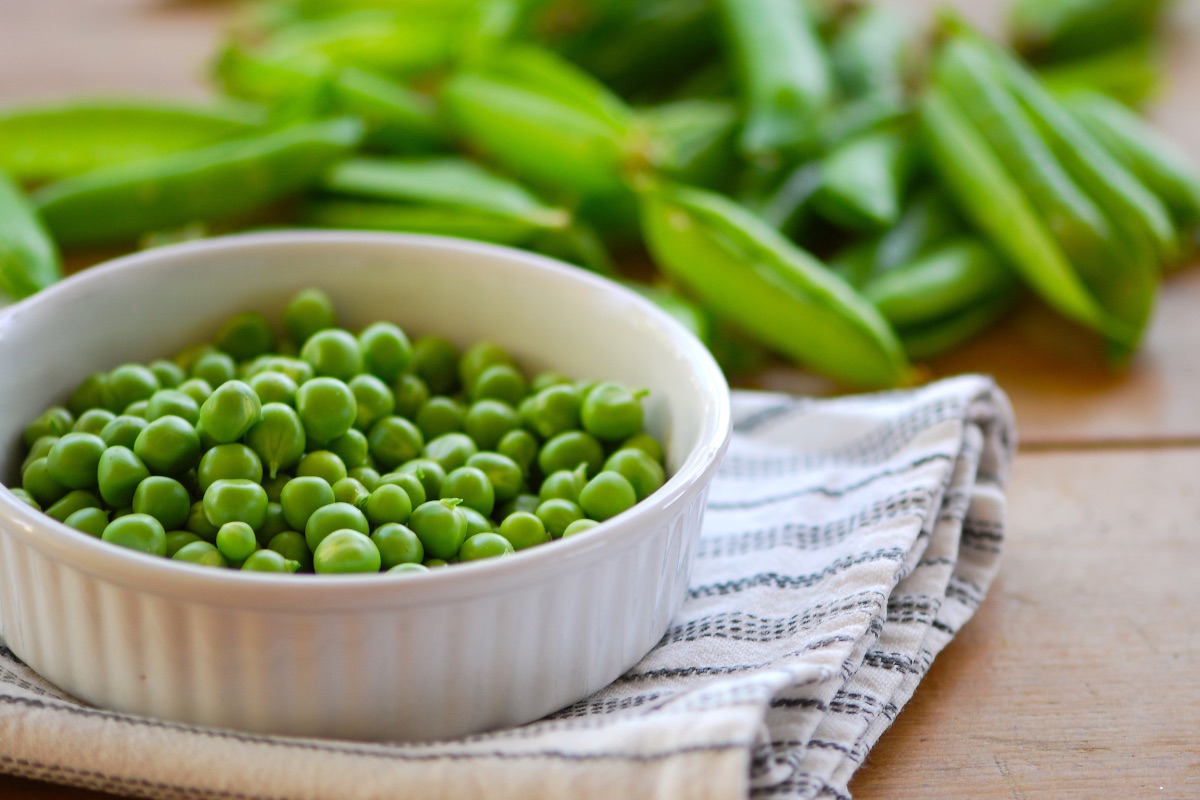CINNAMON FLAVOR
Pure cinnamon has a soft powdery texture that's free of clumps. It should have a dark, mahogany tone and even coloring throughout. The aroma of pure cinnamon is intensely warm and woody. Tasting it delivers a punch of red-hot cinnamon heat. The flavor of 100 percent pure cinnamon brings warmth to sweet dishes, complexity to savory dishes and makes every dish a reason to celebrate.
Our purity pledge means the bottle of cinnamon you open today will have the same taste and aroma as the last one and the next one. Our ground cinnamon is processed and bottled in our own facilities and consistently maintains the same high-quality and product integrity. Other sources of cinnamon can have inconsistent color, aroma and taste. Our stringent safety practices and natural cleaning process ensures our cinnamon is 100 percent pure flavor, with no added fillers. We know the best meals begin with the best ingredients, which is why we are committed to bringing you cinnamon that is consistently pure and flavorful.
We think your nose is the best guide to determining whether a bottle of cinnamon is fresh. Whether it’s traditional, roasted or cinnamon sticks, it should smell rich, warm and slightly sweet, like a buttery spice cookie, right from the oven.
CINNAMON SUGAR RECIPE
This is an easy one! Simply combine ground cinnamon and sugar. Add as little or as much cinnamon as you’d like. Taste as you go to make a blend that’s just right for your recipe. That’s all there is to it.
CINNAMON STICK SUBSTITUTE
For cinnamon flavor, substitute ground cinnamon for cinnamon sticks. For each cinnamon stick called for in a recipe, use 1/4 teaspoon ground cinnamon. If you don’t have cinnamon, more powerful spices like nutmeg, allspice and mace will work in many recipes, but we recommend using lesser quantities. Substituting 1/4 teaspoon of these ground spices for each teaspoon of cinnamon (or 1/16 of a cinnamon stick) will lend flavor and warmth without overpowering other flavors.
HOW IS CINNAMON MADE?
Cinnamon is harvested from the bark at the base of cinnamon trees, where the outer bark is scraped off before harvesting the inner bark. If cut down, the trees regrow. The bark can be tested for its aroma and flavor and, once harvest, is shipped to facilities to be cleaned and dried. During cleaning, the inner bark naturally curls up into quills during the drying process. Quills are used for cinnamon sticks or ground for powder.
WHERE IS CINNAMON FROM?
We source our cinnamon bark from trees in Indonesia, and the best cinnamon will come from well-nourished trees that grow in warm, wet climates with no dry season.
We are the only company to have our own facilities there, which means we are able to clean, dry and sort right there and not wait to be imported to US. The resulting bark quills are packaged and quickly shipped to our processing plant in Maryland. The cinnamon bark quills are then cleaned a second time with natural steam to maintain its genuine flavor.
WHERE IS CINNAMON ORIGINATE?
Cinnamon has meant many things to many people over its long history. Ancient civilizations called it “sweet wood” for its warm flavor and woodsy, sweet aroma. The Egyptians, including Cleopatra, used it as perfume. And it served as a much-needed room freshener, burned like incense, during the Middle Ages. In Chinese mythology, pilgrims gained immortality from eating the fruit of the cinnamon tree. We love the thought that people over the ages have appreciated the wonderful aroma of cinnamon as much as we do today.
The 1600s, it turns out, were banner years for cinnamon. That’s when cinnamon toast—nothing more than cinnamon and sugar on hot buttered bread—was first recorded as a childhood favorite. It’s also when recipes for cinnamon sticks (or at least a form of them made with gum Arabic, rosewater, cinnamon and sugar) were prescribed as “good for colds, or children in church.” Today, we prefer natural cinnamon sticks, of course, but we still love cinnamon toast—and the essential dusting of cinnamon sugar on top.
WHAT IS THE BEST CINNAMON?
Here are the best types of Cinnamon that you can get from us:
- Ground Cinnamon is a cabinet staple that can be used in a wide variety of sweet or savory dishes, and it can be used as a substitute for cinnamon sticks as well as combining with sugar for sweeter results.
- Roasted Cinnamon transforms traditional cinnamon’s sharp, sweet flavor into something rich, deep and toasty. One taste and you’ll want to make it a pantry staple, with a spot right next to the regular version.
- Cinnamon sticks - also called cinnamon quills - are ideal for infusing that rich, spicy flavor and aroma into slow-cooked stews and simmered beverages. It’s beloved around the globe for adding toasty warmth to sweet and savory dishes alike. Try this: Use a cinnamon stick to stir your morning coffee. Now take a moment to inhale the scent. There’s no better way to start the day!
- Cinnamon Sugar is the ideal, pre-mixed blend for baked goods and fruit.
CINNAMON USES IN COOKING
Apples, peaches, pineapple, blueberries … our ground cinnamon brings out the natural sweetness of all kinds of fruits. Whether the fruit is sautéed in a bit of butter, whipped into a smoothie or baked into a pastry or pie, we find that cinnamon is a perfect mate.
On the savory side, cinnamon pairs well with citrusy flavors like lemon and orange. Try baking a boneless chicken breast or pork chop with a sprinkle of cinnamon, a splash of orange juice, a pinch of thyme leaves and a touch of olive oil.
Cinnamon has long been a mainstay spice in Middle Eastern cuisine. It pairs well with ingredients like almonds, raisins, cardamom and cloves. We like to add chunks of lamb or chicken for the makings of a satisfying stew.
Roasted cinnamon can be used the same way as traditional cinnamon, but the flavor profile of its sweet and savory characteristic will punch up the flavor profile of the same dishes.
WHAT TO DO WITH CINNAMON STICKS
Cinnamon sticks lend warmth to any hot beverage, and it can often distribute in liquids more uniformly than ground cinnamon. Use a stick to stir your morning coffee, espresso or hot cocoa, simmer it into apple cider or mulled red wine, or use as a fragrant swizzle stick in your mixed drinks.
Indian cooks use many spices in their curry blends, and cinnamon sticks are a favorite. They simmer the sticks into curries, especially for chicken or lamb, and use them to flavor biryani, a soulful dish of rice, meat and vegetables. We especially love cinnamon’s flavor in vegetable curries made with eggplant and tomato.
Familiar with pho? This satisfying Vietnamese favorite is a brothy bowl of rice noodles, with beef or pork, bean sprouts and sprigs of fresh cilantro. The secret is in the long-simmered broth, flavored with cinnamon stick, peppercorns and star anise.
Add a cinnamon stick to the cooking water. Stir in the oatmeal, plus a teaspoon of brown sugar and a handful of almonds. Rise and shine! Slowly braised beef—short ribs, chuck roast, sirloin cubes—is a comforting, cool-weather dish. Start with diced bacon; brown the meat and a couple of chopped onions. Add a savory liquid—beef broth, tomato juice or red wine. Toss in a cinnamon stick, thyme leaves, a bay leaf, salt and black pepper. Serve with heaps of mashed potatoes.
Flavor simple syrup with cinnamon sticks to use in cocktails, iced tea and lemonade. Bring a cup each of sugar and water, plus two cinnamon sticks to the boil over medium heat. Simmer until the sugar is dissolved. Use this to sweeten any beverage—or pour into a mason jar, tie with ribbon and gift it as a sweet, homemade treat from the kitchen.
WHAT IS CINNAMON SUGAR?
Cinnamon sugar is a must-have at the breakfast table. We love it in French toast, blueberry muffins, oatmeal, waffles with syrup and homemade granola for a sweet start to any day.
There’s no better use for cinnamon sugar than sprinkled over melted butter on crisp, hot toast. Need we say more?
Fruit, whether fresh in a salad or baked into a cobbler, buckle, tart or pie, is the perfect vehicle for cinnamon sugar’s spicy warmth. Sprinkle it on top or fold it into your fruit filling for easy, delicious flavor.
Cinnamon sugar never met a cookie it couldn’t improve. We love to dip a fork in the mixture when pressing the hatch pattern into classic peanut butter or molasses cookies. Or try rolling balls of butter cookie dough in cinnamon sugar before baking.
Nobody will ever know you used refrigerated breadstick or biscuit dough if you brush it with melted butter and cinnamon sugar before baking. You’ve just made the perfect afternoon snack or Saturday morning breakfast treat! Any fruit cobbler or crisp—peach, blueberry, apple, plum—will benefit from a dusting of cinnamon sugar over the topping just before you pop it in the oven. It’ll bring sparkle and crunch to the finished dish.
ROASTED CINNAMON
On the savory side, roasted cinnamon finds a surprising match in citrus fruits. For a quick weeknight dinner, we love baking chicken breasts with roasted cinnamon, a pinch of thyme leaves and a splash each of orange juice and olive oil.
Roasted cinnamon pairs beautifully with the classic ingredients of the Middle East, like almonds, raisins, cardamom and cloves. Add chunks of lamb or chicken, a handful of chickpeas and a splash of rich chicken broth for a satisfying stew.
Use roasted cinnamon anywhere you want to intensify the cinnamon flavor. Try it in French toast, homemade granola, muffins and sweet rolls, spice cake and pecan pie.
Any fruit—peaches, plums, blueberries, apples—will get a lift from roasted cinnamon. Whether baked into a pie or tart, sautéed with butter and sugar or whipped into a smoothie with yogurt, roasted cinnamon will add rich flavor.
FLAVORS THAT GO WITH CINNAMON
Add even more flavor to your meals with these herbs and spices. They go great with cinnamon.
- Turmeric: McCormick Turmeric hails from India, where it’s considered a sacred part of Hindi culture. We monitor its progress from field to package to ensure consistent color and quality in every bottle. The turmeric plant hides its brilliant color underground, showing only glossy green leaves and multi-petaled white flowers. But dig up the root, carefully clean and dry it, and you have an extraordinary spice beloved as much for its color as its flavor. Our pure turmeric in ground form is a lively partner for infusing curries, soups, stews, rubs, marinades and vegetable and rice dishes with beautiful color and citrusy aroma.
- Cumin: Cumin is one of the top 10 selling spices in the U.S. The spice dates back to Egypt 4,000 years ago, and McCormick Cumin is hand-harvested, sun-dried and carefully screened so you know you're getting nothing but the purest flavor. Add this spice for a warm flavor and earthy color to everyday soups, stews, meats and vegetables.
- Thyme: The plant’s tiny leaves—just a quarter inch at most in length—must be carefully harvested, cleaned, dried and milled to retain their rich color, piney aroma and earthy flavor. In the ancient world, thyme was a symbol of courage and bravery. One of the highest compliments to pay a Greek warrior, for instance, was to say he smelled of thyme. And in the Middle Ages, thyme was used to fend off nightmares. Today, our pure thyme holds its greatest place of honor in the kitchen as one of our most popular herbs.
- Nutmeg: Nutmeg’s sweet distinctive flavor is traditional in gingerbread, eggnog and rice pudding. Add a pinch to scalloped potatoes, creamed spinach and béchamel sauce
- Ginger: The very finest ginger comes from small holder farmers on one to two acre plots of land off the Malabar Coast of India. Ginger has enjoyed some unusual uses, including warding off the plague during Henry VIII’s time. In the 19th century, ginger was commonly sprinkled on top of beer or ale and then stirred into the drink with a hot poker. Today, ginger is an essential ingredient in all kinds of sweet and savory dishes.
RECIPES FOR CINNAMON
Cinnamon is frequently used in popular breakfast and dessert dishes. You can use cinnamon sugar for extra sweetness, cinnamon sticks for evenly spicing liquids, and roasted cinnamon for an extra punch of cinnamon flavor.
Sweet Recipes Using Cinnamon Sugar:
Try cinnamon sugar or regular cinnamon with fruit, oatmeal, homemade granola, cookies, and more. Here are recipes to get you started:
- Cardamom Hibiscus Sharbat
- Churro Waffles
- Cinnamon Monkey Bread
- Cinnamon Pancakes
- Cinnamon Caramel Swirl Bars
- Cinnamon Bun Latte
- Cinnamon Rolls
- Cinnamon Bread Sticks
- Overnight French Toast
- Cajeta Fruit and Nut Warm Brie
- Thyme and Cinnamon Poached Pears
Cinnamon Savory Recipes:
Cinnamon can punch up savory recipes like chili, European beef stew, Middle Eastern braised lamb, Moroccan chicken, and Indian curry. Here are savory recipes to get you started:
- Spice-Roasted Sweet Potatoes
- Cayenne Cinnamon Ribs with Maple Glaze
- Cinnamon-Braised Lamb Shanks with Mashed Potatoes
Cinnamon in Beverages:
Cinnamon powder or sticks add layered flavor to drinks, appropriate for any time of the day from coffee and chai tea to eggnog and rum toddies. Recipes include:
- Cinnamon Spiked Coffee
- Cinnamon Red Iced Tea
- Whipped Cinnamon Peanut Butter Milk
- Summer Sangria with Grilled Fruit
LEARN MORE ABOUT CINNAMON IN FOODS
Still not convinced in cinnamon’s versatility? Dive into our articles for detailed discussion on how cinnamon adds texture and depth to a wide variety of dishes.
- How to Make Cinnamon Syrup for Cocktails
- One Bowl Apple Cinnamon Cake for Fall
- Turn Chickpeas into Cinnamon Toast Crunch
- Make Cinnamon Rolls from Oatmeal
- Cinnamon Butter Pairs Naturally with Sweet Potatoes
- Slow Cooker Spiked Cinnamon Lattes
- Vanilla Cinnamon Whipped Coffee
- Big Batch Breakfast Buns
- Swedish Cinnamon Buns
GRAB YOUR CINNAMON PRODUCTS!
- McCormick Cinnamon Sugar
- McCormick Roasted Cinnamon
- McCormick Ground Cinnamon
- McCormick Cinnamon Sticks
- McCormick Gourmet Roasted Saigon Cinnamon
- McCormick Gourmet Organic Ground Saigon Cinnamon
- McCormick Gourmet Organic Saigon Cinnamon Sticks
LEARN MORE ABOUT HERBS AND SPICES
CUISINES TO TRY
Want to create a meal plan for your Cinnamon recipes? Need help planning your weekly meals and want to try new recipes? Save your favorite food, dessert, drink recipes and organize your ingredients with McCormick Meal Planner.








